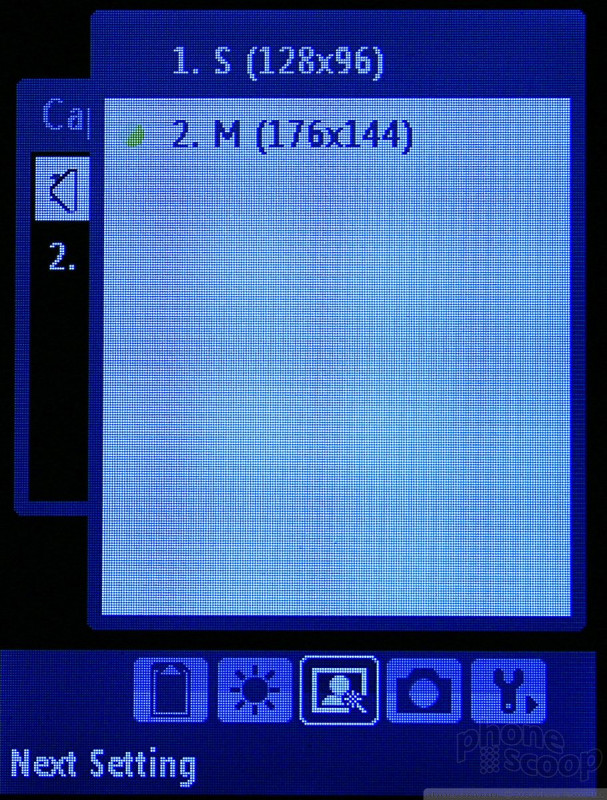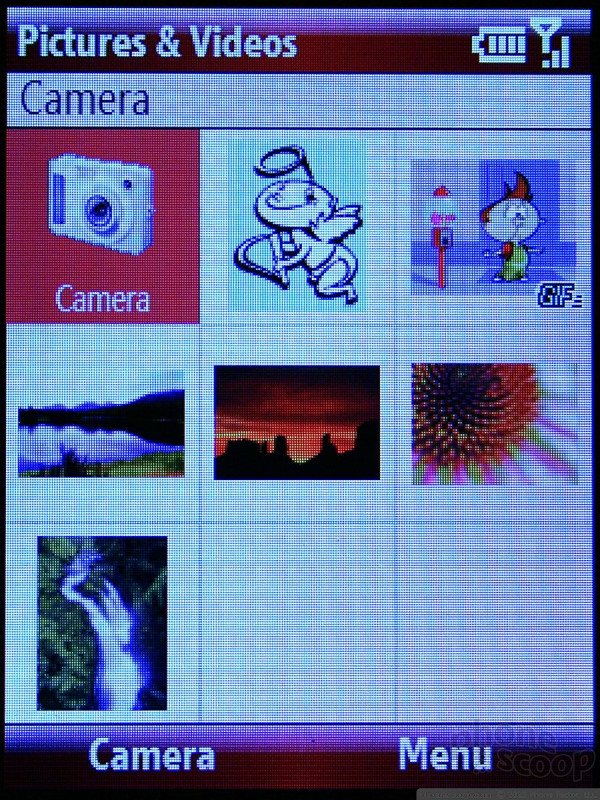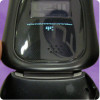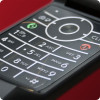Review: HTC SMT-5800
Camera
The 5800 has a 2 Megapixel camera that scored 20/50 on the vision test, which means it offers average sharpness performance at a distance of 10 feet. You can launch it with the dedicated camera button on the right side of the phone or through the Start menu. Either way takes about 2 seconds to fire up the camera. The camera has a rich feature set and lots of tools to customize your pictures and the picture taking experience.
Along the top of the screen, it shows you what mode you are in (still/video), how far you're zoomed in, what size the pictures will be, where they are being stored, and how many you have left. At the bottom of the screen is an array of icons that let you know how the camera's settings are configured. Hitting the left soft key will highlight the left-most icon, which is the timer. It lets you make adjustments to the timer function of the camera. You use the D-pad to interact with the settings themselves. Hitting the left soft key will let you move to the next setting, which is storage location, followed by ambiance, capture settings, mode and advanced features. Each of these mini-menus comes up on the screen and the D-pad lets you navigate each of them. They offer quite a wide array of ways to alter the camera's settings. When you're all done, hit the right soft key to go back out to the camera itself.
One frustration here is that if you accidentally pass the one setting you may want to change, there's no way to go back. The leftsoft key only moves the selector from left to right, and using the "back" key itself takes you back out to the Start menu. So this means you have to circle backaround if you mistakenly go too far.
When you're ready to shoot, hitting either the center of the D-pad or the camera button will snap the shot in about one second. The picture appears almost immediately in a review screen. When reviewing the picture, there is a little menu bar along the bottom. It lets you jump back to the camera, delete the image, send it via MMS or email, or view it in the gallery.
In shooting mode, the D-pad lets you adjust exposure and zoom on the fly. Exposure adjustments range in half steps from -2.0 to 2.0. The extent to which the camera zooms depends a bit on what resolution you have the camera set to. One thing to note, zooming takes forever. The standard shooting mode is zoom level one. Press up on the D-Pad and it takes about 1.5 seconds to move up to 1.2. If you want to move in further, you have to hit the D-pad again, and can expect another 1.5-second delay. While the camera is zooming, the screen goes black and waits for the new zoom level to be reached before it re-displays the viewfinder.
Gallery
The picture gallery can be reached two ways. First, after you've taken a picture, you can choose to view it in the gallery mode. There is no other way to jump to the gallery from the camera application itself that we could find. You can also find it through the Start menu. The 5800 segregates your libraries based on where they are located. The generic My Pictures folder takes you to a grid. In the grid is access to the camera application and a couple of pre-loaded images. Hitting the right soft key, Menu, opens up a list with action items such as send, beam, save to contact, delete, etc. But you don't see all your pictures in this preliminary My Pictures folder. You have to choose the seventh option in menu, which is called Folders. There are three choices: My Pictures, My Device and Storage Card. The My Device selection really is a search application that lets you hunt around the device to find pictures. Since we store images on the storage card, that's where every picture we actually took was located. This seemed a bit onerous a process to find our images.
Once in the gallery, it shows you nine images at a time in grid layout. The left soft key is View, and lets you open up the image. The right soft key is Menu. You have basically the same selection that we mentioned above: send, beam and so on. Using the D-pad to find an image and hitting the center button will also open the image. With an image open, the Menu button brings up some different options, such as Zoom, but most are the same. They don't allow you to edit the pictures, but will let you send them or store them.

















 CTIA Fall 2007
CTIA Fall 2007
 CTIA 2007
CTIA 2007
 iPhone 14 Plus Offers a Big Screen For Less
iPhone 14 Plus Offers a Big Screen For Less
 iPhone 15 Series Goes All-In on USB-C and Dynamic Island
iPhone 15 Series Goes All-In on USB-C and Dynamic Island
 Samsung S24 Series Adds More AI, Updates the Hardware
Samsung S24 Series Adds More AI, Updates the Hardware
 HTC 5800 / Fusion / S720
HTC 5800 / Fusion / S720



